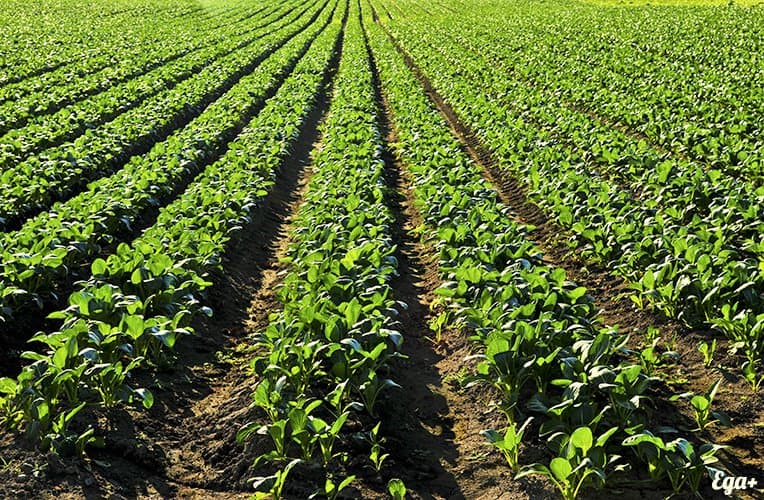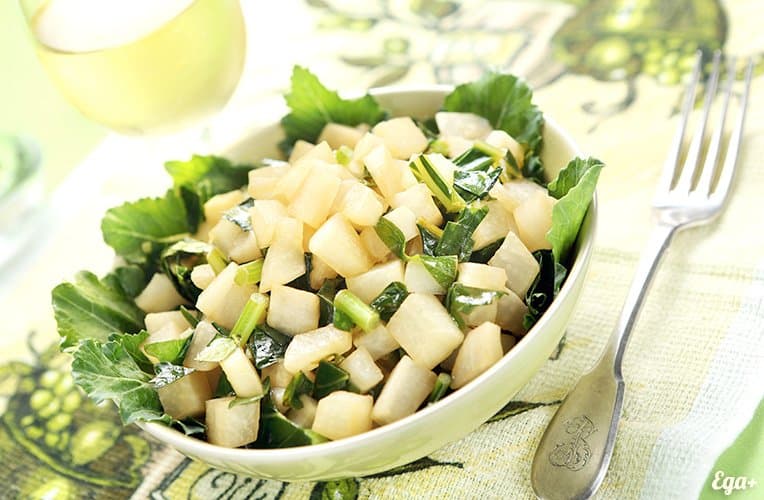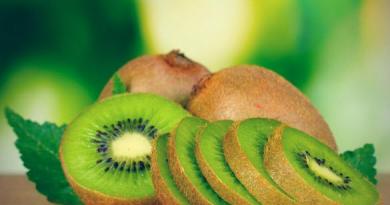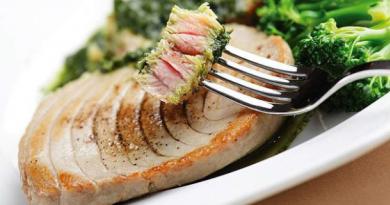Turnip is an annual or biennial herbaceous plant of the Cabbage family. A smooth yellow root crop, in diameter it can reach from 8 to 20 cm and weigh 10 kg. All types of turnips are very early ripening, the finished root crop is formed in 40 - 45 days, late varieties - in 50 - 60 days. The leaf rosette reaches a height of 40 - 60 cm. Turnip as a vegetable and medicinal plant has been known since ancient times. Turnips can be baked, boiled, stuffed, casseroles and stews are prepared from it, it is suitable for making salads. It can be stored for a long time in a cool place without losing its healing qualities; easily absorbed by the body and recommended for baby food. In Russia, the expression "simpler than a steamed turnip" has long been known, indicating its many years and frequent use.
Turnip was one of the first vegetables that received close attention of mankind. The Greeks, Egyptians and Persians fed slaves with turnips, considering this vegetable to be a coarse but satisfying food, the Romans considered turnips to be the food of commoners, but with the beginning of our era, the vegetable went out of the category of “slave” - in the early Middle Ages, turnips baked in coals were considered a delicacy and were often served with meat as a side dish.
Turnip was the main vegetable in Slavic cuisine. And not only among the common people, but also among the richer merchants and nobility. Speaking of “basic”, we put turnips in place of potatoes, which now - both as a side dish, and in soup, and mashed potatoes, boiled, baked and fried, is used in a very large number of dishes. Catherine II insisted on growing more “fashionable” and convenient potatoes, and slowly but surely, turnips were pushed into the category of “obsolete” vegetables. In the 20th century, cooking from turnips was already something common, even indecent. With the transition of turnips to the category of simple vegetables, many secrets of its processing, preparation and recipes based on turnips were lost.

Useful properties of turnip
Since ancient times, turnip has been considered an excellent means of cleansing the body of toxins. Raw turnip contains up to 9% sugars, a very high content vitamin C(twice as much as in any root crop), B1, B2, B5, PP, provitamin A (especially in yellow turnip), easily digestible polysaccharides, sterol (an element necessary in the treatment of atherosclerosis.
Turnips contain the rare element glucoraphanin, a plant analogue of sulforaphane that has anti-cancer properties. This element is found only in turnips and various types of cabbage: broccoli, kohlrabi and cauliflower.
Turnip contains rare trace elements and metals: copper, iron, manganese, zinc, iodine and many others. Turnips contain more phosphorus than radishes and radishes, and sulfur, which is necessary to purify the blood and dissolve stones in the kidneys and bladder, cannot be found in any other familiar vegetable. High levels of magnesium help the body store and absorb calcium. The turnip even contains an antibiotic that inhibits the development of some fungi, including those dangerous to the human body (which, however, does not work on E. coli and staphylococci).
Turnip activates the activity of the liver and the secretion of bile, which prevents the formation of gallstones. Cellulose supports the activation of intestinal motility and the prevention of nutrient stagnation. This has many benefits for lowering cholesterol, which in turn is great for preventing atherosclerosis. Turnip contains lysozyme, a substance with very strong antimicrobial activity. It is interesting to note that turnip is a natural antibiotic, able to destroy or prevent signs of various diseases, especially skin and mucous membranes.
Turnip is a low-calorie product rich in vitamins. Turnip saturates, but does not allow excess weight to start. Mineral salts and essential oils contained in turnips can serve as a universal complex that regulates health. It is not without reason that so many fairy tales and sayings about turnips appeared. This root crop has wound healing, diuretic, anti-inflammatory, antiseptic and analgesic effects. In addition to the fact that properly cooked turnips are very tasty, they are also incredibly healthy.
For diabetic patients, turnip is an excellent general tonic, doctors especially recommend it in winter. However, it is worth controlling the amount of food eaten, since this root crop contains a lot of sugar, and you should generally refrain from rutabaga.
Turnip juice is drunk for coughs, sore throats (from a simple cold to the restoration of a completely “shrunken” voice). It relieves asthma symptoms, improves sleep and calms the heartbeat. Boiled turnips are ground into gruel and applied to sore spots with gout. And even a toothache was removed with a decoction of turnips. A large amount of fiber in turnips stimulates intestinal motility.
A decoction of turnip roots improves sleep, calms the heartbeat, has a laxative effect, helps with asthma and bronchitis. To prepare a decoction, you will need one to two tablespoons of chopped turnip roots. It is necessary to pour two hundred ml of boiling water, boil for fifteen minutes and strain. Take a decoction of 1/4 cup four times a day or one glass at bedtime.
Perhaps the decisive role in the displacement of turnips was played by the longer cooking time of turnips in relation to potatoes. Potatoes cooked much faster, became crumbly and soft, and more dishes could be made from it. The feeling of satiety from turnips and potatoes is similar, at that time it was not customary to understand the causes of sensations. "Potato satiety" was the result of heavy digestion of large amounts of starch. Carbohydrates, which form the basis of potatoes, provided a large number of calories, but it is carbohydrate foods that are responsible for excess body fat. Turnips, like celery, parsley root and parsnips, often ignored today, can just as well be used in soups instead of potatoes and even boiled to the softest state. Yes, cooking turnips takes more time, but in terms of the balance of nutrients and special healing properties, turnip leaves potatoes behind, and in the skillful hands of an experienced chef it becomes a delicacy.
By stewing and baking, you can cook a lot of wonderful dishes with turnips. For example, with apples and raisins. Turnip in this dish is the main ingredient, but options with sauces, gravies and additives are possible. Turnip can be a side dish for meat, game or fish.

Dangerous properties of turnips
Turnip is a very useful product, but its excessive use can worsen the situation in some diseases. So, raw turnip is contraindicated in patients with stomach and duodenal problems, colitis and acute gastroenteritis. It is also not advised to use this root crop in its raw form for inflammation of the liver and kidneys, as well as for other intestinal ailments.
In addition, it is not recommended to add dishes with turnips to your diet for certain diseases of the central nervous system. Therefore, having problems with the nervous system, you need to consult a doctor who will tell you whether it is right for you to eat turnips and dishes from it.
While it is useful for pregnant women to eat 200-300 gr. turnips 1-2 times a week, it is not recommended for a mother with a baby to eat turnips: the baby may have an unpredictable reaction - allergies, diarrhea, colic, constipation. Therefore, it is advised to introduce turnips into the diet of a child from the age of 2.
Looking for unusual recipes? Try the turnip stuffed with mushrooms.



